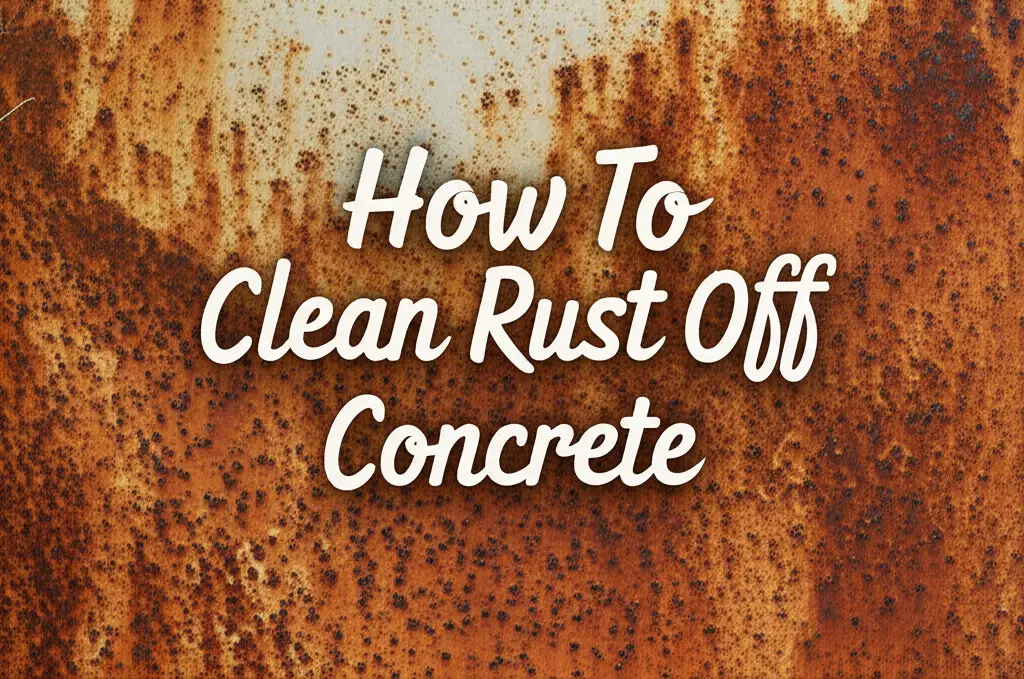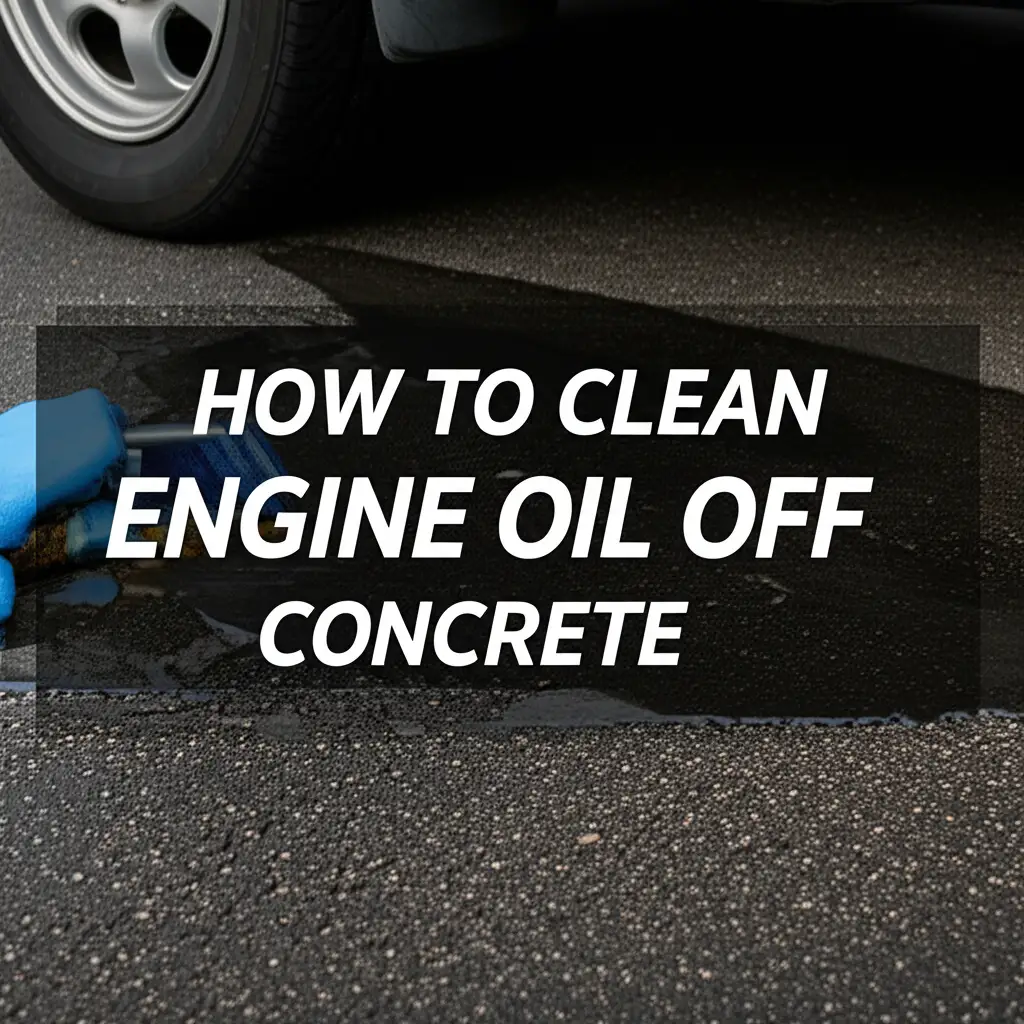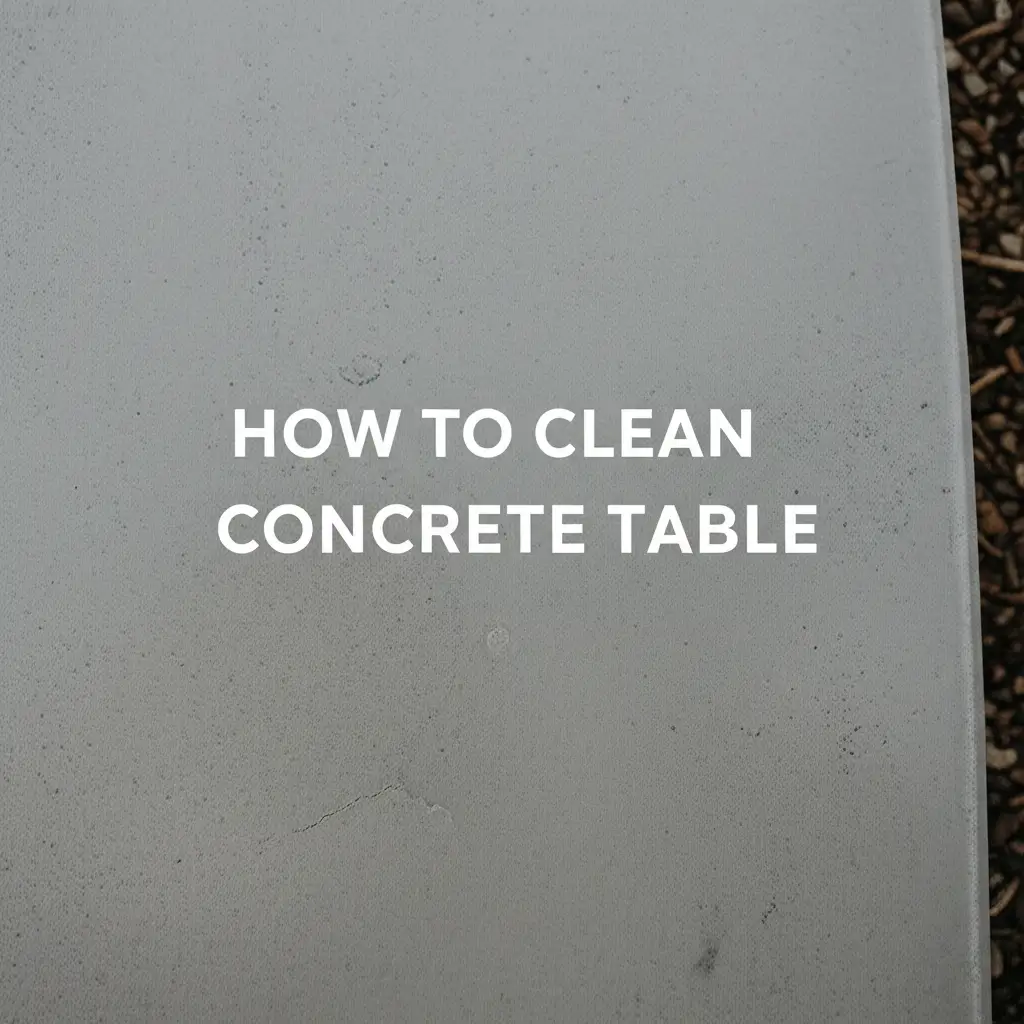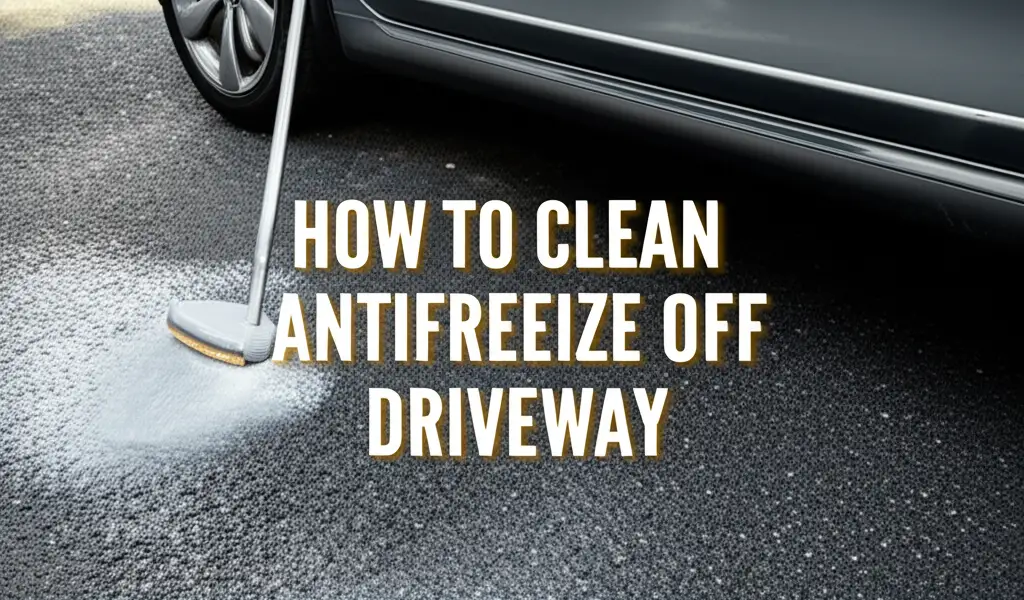· Home Maintenance · 14 min read
How To Clean Concrete Steps
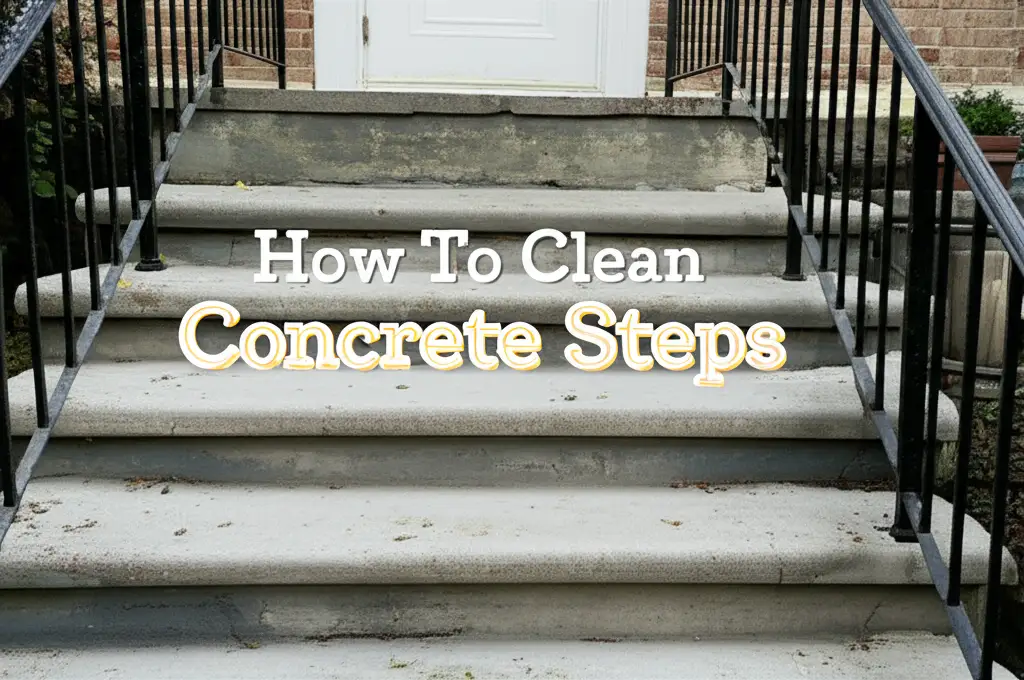
Mastering Concrete Step Cleaning: A Step-by-Step Guide
Your concrete steps are important. They welcome guests to your home. They also endure constant foot traffic and harsh weather. Over time, dirt, grime, moss, and various stains can make them look dull. This reduces your home’s curb appeal. Keeping them clean is not just about looks. It also prevents slip hazards and preserves the material.
Many homeowners wonder how to clean concrete steps thoroughly. This guide provides clear, actionable steps. We will cover basic cleaning methods. We will also discuss how to tackle stubborn stains. You will learn about different cleaning solutions. You will also discover the right tools. Get ready to transform your outdoor steps. We help you make them look inviting and new again.
Takeaway
- Start with basic sweeping and scrubbing.
- Identify and treat specific stains separately.
- Use a pressure washer for deep cleaning, if safe.
- Apply sealants to protect steps from future damage.
- Maintain steps regularly to prevent dirt buildup.
To clean concrete steps, sweep away loose debris. Then, scrub with a stiff brush and a mixture of mild detergent and warm water. For stubborn stains, use specialized cleaners or a pressure washer. Always test cleaners on a hidden area first. Rinse thoroughly to remove all residue.
Understanding Your Concrete Steps
Before you clean concrete steps, know their type. Concrete steps come in various finishes. Some are smooth. Others have an exposed aggregate surface. They can be painted or stained. The finish affects the best cleaning method. A smooth, sealed surface cleans differently from rough, porous concrete.
Porosity is a key factor. Unsealed concrete is more porous. It absorbs spills and stains easily. This makes cleaning harder. Sealed concrete repels liquids. It is easier to maintain. Understanding your step’s condition helps you choose the right approach. This prevents damage during cleaning. It also ensures the best results. Knowing what you are cleaning helps you pick the right tools.
The Importance of Regular Cleaning
Regular cleaning is simple. It prevents dirt buildup. It stops grime from embedding deeply. This makes future cleaning jobs easier. It also extends the lifespan of your steps. Dirt and moisture can lead to cracks. They can also cause deterioration over time.
Regular cleaning removes these threats. It keeps your steps safe. Algae and moss make surfaces slippery. Removing them reduces fall risks. A clean path is also more inviting. It enhances your home’s appearance. Simple, routine maintenance saves you effort and money in the long run.
Preparing Your Concrete Steps for Cleaning
Proper preparation makes cleaning concrete steps much easier. It also protects your surrounding landscape. Never skip these initial steps. They set the stage for a successful cleaning job. A well-prepared area ensures safety and efficiency.
First, clear the steps. Remove potted plants, doormats, and any furniture. Sweep loose dirt, leaves, and debris. Use a stiff broom or a leaf blower for this task. This step prevents mud from forming when you add water. It also helps cleaning solutions work directly on the surface.
Protecting Nearby Areas
Protect plants and lawns from cleaning solutions. Some cleaners can harm vegetation. Use plastic sheeting or tarps to cover nearby plants. Secure the covers with weights or rocks. If you use strong chemicals, pre-wet plants with water. This dilutes any overspray. Rinse plants again after you finish cleaning.
Also, be aware of runoff. Direct water away from sensitive areas. Ensure cleaning solutions do not pool where they could damage paint or wood. Proper preparation ensures you clean only what you intend to. It protects your property from unintended harm.
Basic Cleaning Methods for Light Dirt and Grime
Many steps only need a simple wash. For everyday dirt and grime, you do not need strong chemicals. A basic approach works well. This method is safe for most concrete types. It is also environmentally friendly. You can do this regularly.
Start with warm water. Add a few drops of mild dish soap or a dedicated concrete cleaner. Mix it well in a bucket. Apply the solution generously to the concrete steps. Let it sit for about 10-15 minutes. This allows the soap to break down the dirt.
Scrubbing and Rinsing
Use a stiff-bristled brush to scrub the steps. A push broom with stiff bristles works well for larger areas. For edges and corners, a hand brush is better. Scrub vigorously to lift the dirt. You will see the grime loosen from the surface. Pay attention to high-traffic areas.
After scrubbing, rinse the steps thoroughly. Use a garden hose with a spray nozzle. Ensure all soap residue is gone. Soap left on the surface can attract more dirt. It can also create a slippery film. Rinse from the top step downwards. This washes all the loosened dirt away. This simple method often restores the steps’ appearance significantly.
Tackling Stubborn Stains on Concrete Steps
Basic cleaning handles most dirt. However, concrete steps often get stubborn stains. These can be oil, grease, rust, or mold. Each stain type needs a different approach. Using the wrong cleaner can damage the concrete. It can also make the stain worse.
Identify the stain before you act. Is it a dark, slimy patch of mold? Is it an orange-brown rust mark? Or a dark, oily spot? Knowing the stain helps you pick the right cleaning agent. This saves time and effort. It also protects your steps. For a broader look at removing various marks, you can explore general tips on how to clean stains from concrete.
Removing Mold and Mildew
Mold and mildew thrive in damp, shady areas. Concrete steps often develop these green or black growths. They are unsightly and slippery. To remove them, mix equal parts bleach and water. For a natural option, use white vinegar instead of bleach.
Apply the solution to the affected areas. Let it sit for 15-20 minutes. Scrub with a stiff brush. The mold should lift away. Rinse the steps thoroughly with water. Ensure no bleach or vinegar remains. If you face persistent mold issues, check our guide on how to clean mold off concrete. This helps with tougher cases.
Cleaning Oil and Grease Stains
Oil and grease stains are common near driveways or garages. These stains penetrate concrete deeply. To treat them, use an absorbent material first. Kitty litter or sawdust can soak up fresh spills. Let it sit for several hours. Then sweep it away.
For old stains, use a degreaser or a poultice. A poultice is a paste made from an absorbent material and a strong cleaning agent. Apply it to the stain. Cover it with plastic wrap. Let it dry completely. The poultice pulls the oil out. Scrape off the dry paste. Then rinse. For more specific methods, consider reading our detailed article on how to clean oil from concrete. We also have a resource on how to clean grease from concrete if that is your primary concern.
Eliminating Rust Stains
Rust stains often come from metal furniture, tools, or railings. They leave orange-brown marks. Rust removers designed for concrete work best. You can find these at hardware stores. Some natural options include lemon juice or white vinegar with salt.
Apply the rust remover according to product instructions. Or, sprinkle salt on the rust stain. Pour lemon juice or vinegar over it. Let it sit for a few hours. Scrub with a stiff brush. Rinse thoroughly. Always test on a small, hidden area first. This prevents discoloration. For deeper rust issues, our guide on how to clean rust off concrete offers more advanced solutions.
Deep Cleaning Your Concrete Steps with a Pressure Washer
For heavily soiled concrete steps, a pressure washer is a powerful tool. It uses high-pressure water to blast away dirt, grime, and many stains. This method is fast and effective. However, it requires care. Incorrect use can damage your concrete. Always wear safety goggles and closed-toe shoes.
Before starting, sweep the steps. Remove all loose debris. This prevents small stones from becoming projectiles. Choose the right nozzle. A 25-degree green nozzle is good for general cleaning. A 15-degree yellow nozzle offers more power for stubborn spots. Avoid using a zero-degree red nozzle. It can etch or strip the concrete surface. Start with a wide spray pattern.
Pressure Washing Techniques
Hold the pressure washer wand at a consistent distance. Maintain a distance of 12-18 inches from the concrete. Move the wand in even, overlapping strokes. Work from the top step down. This directs dirty water away. Do not hold the nozzle in one spot for too long. This creates uneven cleaning marks. It can also damage the surface.
For tough stains, you can move the nozzle closer. Do this only when necessary. Always keep the water moving. Some pressure washers have a detergent tank. You can add a concrete-safe cleaning solution. Apply the solution first. Let it sit. Then rinse with clear water. Pressure washing is very effective. It gives your concrete steps a refreshed look quickly.
Advanced Cleaning Solutions and Techniques
Sometimes, specific problems require specialized solutions. Beyond common stains, you might face efflorescence or embedded dirt. These issues need a targeted approach. Standard cleaners might not work. Understanding these advanced techniques helps you achieve truly clean steps.
Efflorescence appears as white, powdery deposits. It is mineral salts pushed to the surface by evaporating water. To clean it, use a concrete efflorescence remover. These cleaners contain acidic compounds. Apply the product. Let it soak. Scrub with a stiff brush. Then rinse thoroughly. Our article on how to clean efflorescence off concrete provides a detailed guide.
Dealing with Bird Poop Stains
Bird droppings are acidic. They can etch concrete if left too long. They also carry bacteria. Fresh bird poop is easy to remove. Scrape off the solids carefully. Then scrub with hot soapy water. For dried, stubborn stains, rehydrate them. Lay a wet cloth over the stain for 15-20 minutes. This softens the droppings. Then, scrub with a stiff brush and a strong detergent. You can also use a mixture of baking soda and water as a paste. Apply it, let it sit, then scrub and rinse. For comprehensive tips, see our guide on how to clean bird poop off concrete.
Choosing Commercial Concrete Cleaners
Many commercial concrete cleaners exist. They target specific problems. Some are general-purpose. Others are designed for heavy-duty degreasing or stain removal. Always read product labels carefully. Follow the instructions for mixing and application. Ensure the product is safe for your concrete type.
Test any new cleaner on a small, hidden spot first. This checks for discoloration or damage. Commercial cleaners often contain stronger chemicals. Wear protective gear. This includes gloves and eye protection. Ensure good ventilation. Store these products safely. Proper use yields great results.
Maintaining and Protecting Your Concrete Steps
Cleaning your concrete steps is an important first step. However, maintenance keeps them looking good longer. It also protects your investment. Regular care prevents grime buildup. It stops stains from setting in. A proactive approach saves you significant effort later.
One key step is regular sweeping. Sweep your concrete steps frequently. Remove leaves, dirt, and loose debris. This prevents organic matter from decaying and staining the surface. It also keeps the steps clear of abrasive particles. These particles can wear down the concrete over time.
Applying a Concrete Sealer
Sealing your concrete steps is highly recommended. A good concrete sealer forms a protective barrier. It repels water, oil, and other liquids. This makes cleaning much easier. It also prevents stains from penetrating the concrete. Sealing also reduces efflorescence. It helps concrete resist freeze-thaw damage in cold climates.
Clean the steps thoroughly before sealing. Let them dry completely. Apply the sealer according to the manufacturer’s instructions. You might need multiple thin coats. Most sealers last several years. Reapply sealer periodically. This maintains the protective barrier. Sealing greatly extends the life and appearance of your steps.
Preventing Future Stains
Simple habits prevent many stains. Place doormats at the top and bottom of your steps. These trap dirt and debris. This stops dirt from entering your home. It also prevents it from accumulating on the steps. If you have potted plants, use saucers underneath them. This prevents water stains and mineral deposits.
Address spills immediately. Blot up oil or grease spills quickly. This prevents them from soaking into the concrete. Clean up bird droppings as soon as you notice them. Prompt action minimizes the chances of permanent staining. These small actions make a big difference. They keep your concrete steps clean and inviting.
Safety Measures When Cleaning Concrete Steps
Cleaning concrete steps involves water and sometimes chemicals. Safety is always important. Protect yourself and your property. Follow these guidelines to ensure a safe cleaning process. Ignoring safety can lead to injuries or damage.
Wear appropriate personal protective equipment (PPE). This includes sturdy gloves to protect your hands. Safety glasses or goggles are crucial for eye protection. They shield your eyes from splashing water, cleaning solutions, or flying debris. Wear closed-toe shoes with good grip. Steps can become slippery when wet.
Working with Cleaning Solutions
When using commercial cleaners, read the labels. They provide instructions for safe use. They also list any hazards. Ensure good ventilation, especially in enclosed areas. Do not mix different cleaning chemicals. Mixing can create dangerous fumes or reactions. Always follow the dilution instructions precisely. Using too much concentration can damage the concrete.
Keep children and pets away from the cleaning area. Cleaning solutions can be harmful if ingested or touched. Block off the steps until they are clean and dry. Store cleaning products safely. Keep them in their original containers. Store them out of reach of children and pets. Proper storage prevents accidents.
Using a Pressure Washer Safely
A pressure washer is powerful. It can cause serious injury if not used correctly. Never point the nozzle at people, pets, or fragile objects. Maintain a firm grip on the wand. The kickback can be strong. Be aware of your surroundings. Do not spray electrical outlets or wires.
Work on a stable surface. Avoid cleaning concrete steps when they are icy or extremely slippery. Take breaks if you feel tired. Fatigue increases the risk of accidents. Disconnect the power and water supply when not in use. Store the pressure washer safely. Follow these precautions. You will clean your concrete steps effectively and without incident.
Frequently Asked Questions
Can I use bleach to clean concrete steps?
Yes, you can use diluted bleach to clean concrete steps. Mix equal parts bleach and water. It works well for mold, mildew, and general discoloration. Always test on a small, hidden area first. Rinse thoroughly after cleaning to remove all residue.
How do I remove black spots from concrete steps?
Black spots are often mold, mildew, or algae. Use a solution of bleach and water, or a specialized outdoor mold remover. Apply, let sit for 15-20 minutes, then scrub vigorously with a stiff brush. Rinse completely to prevent regrowth.
Is it safe to pressure wash old concrete steps?
Pressure washing can be safe for old concrete steps. Use a lower pressure setting and a wider nozzle (like a 25-degree or 40-degree). Hold the wand further away from the surface. Old concrete may be more fragile. Test a small area first to ensure it does not damage the surface.
How often should I clean my concrete steps?
The frequency depends on traffic and weather. For most homes, cleaning concrete steps once or twice a year is sufficient. If you live in a damp climate or have heavy foot traffic, you might need to clean them more often. Regular sweeping helps reduce deep cleaning needs.
What should I do about stubborn oil stains?
For stubborn oil stains, use an absorbent material like kitty litter. Let it sit overnight. Then, sweep it up. For older stains, apply a concrete degreaser or a poultice. A poultice pulls the oil from the concrete. Follow product instructions carefully.
Can vinegar damage concrete steps?
White vinegar is generally safe for concrete steps in diluted forms. Its acidity can help remove efflorescence, mold, or some stains. However, prolonged exposure to undiluted vinegar can etch or slightly damage the surface over time. Always rinse thoroughly after use.
Conclusion
Cleaning concrete steps keeps them looking their best. It also ensures safety and extends their life. We have covered everything you need. You know how to prepare, clean, and protect your steps. From basic scrubbing to tackling tough stains, you have the knowledge. We discussed effective tools and cleaning solutions. Remember to prioritize safety. Always test products in a small area first.
Regular maintenance is key. Sweeping often and promptly addressing spills saves time. Applying a concrete sealer provides long-term protection. Your concrete steps are more than just a walkway. They are a significant part of your home’s exterior. Give them the care they deserve. A clean, well-maintained set of concrete steps enhances your home’s appeal. It welcomes everyone with pride. Start cleaning your concrete steps today. Enjoy a more inviting entrance to your home.
- concrete cleaning
- outdoor steps
- stain removal

